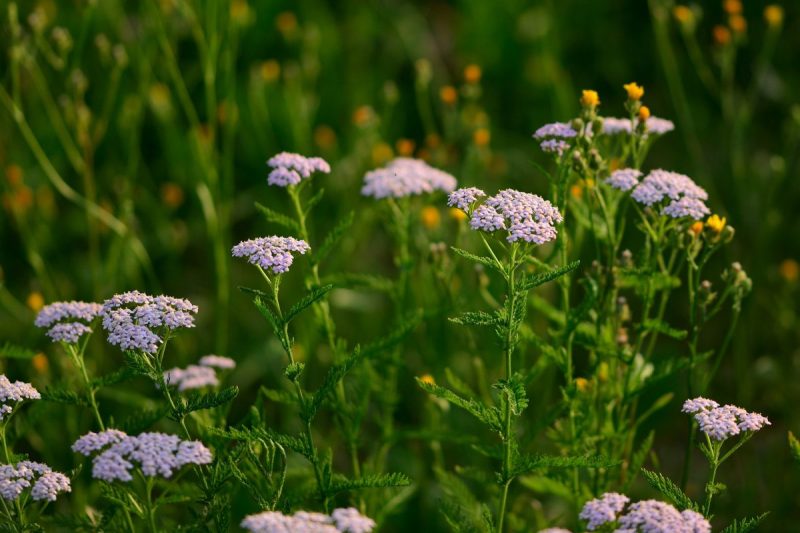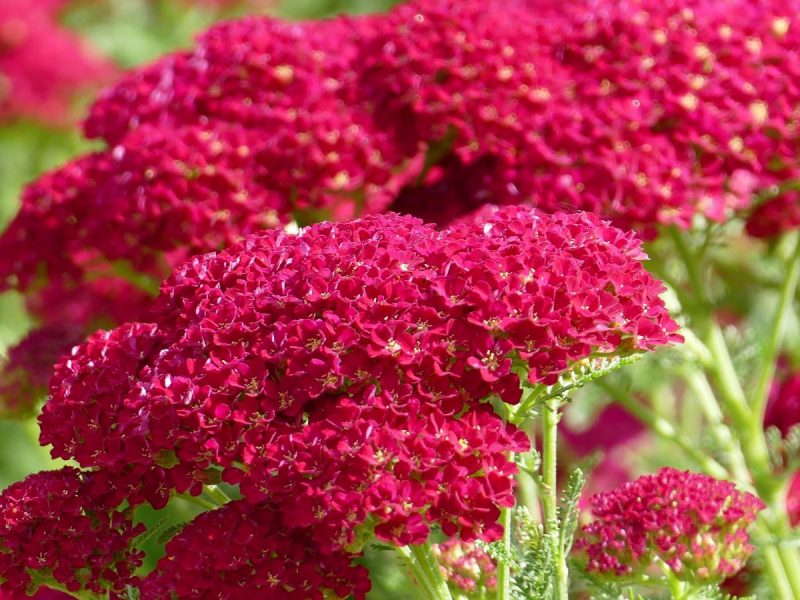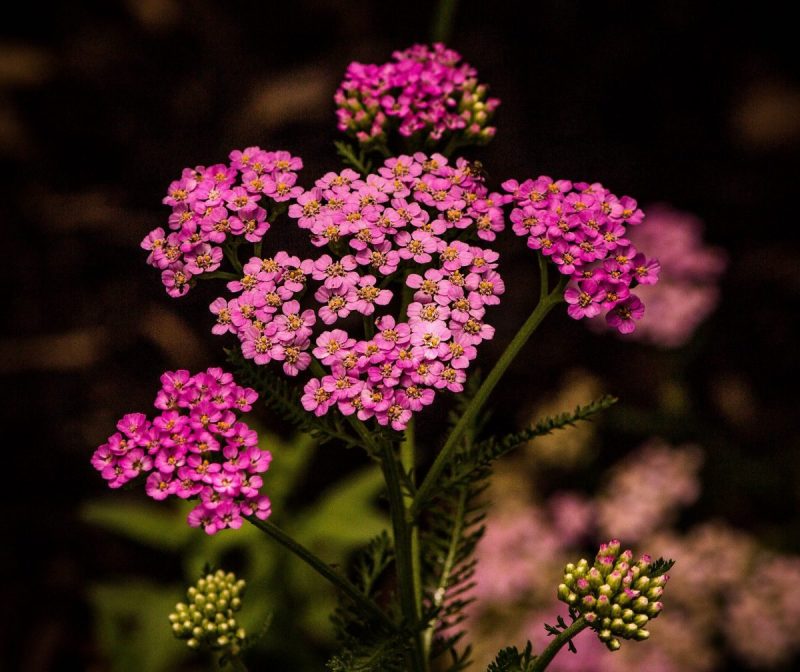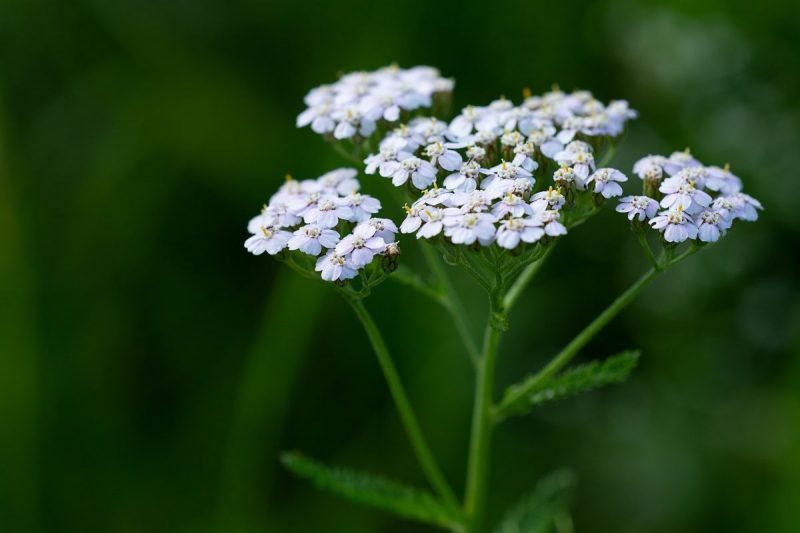Yarrow – planting, growing and harvesting

Yarrow (Achillea millefolium) is an ancient medicinal plant, being one of the most well-known and used species in the traditional medicine of many countries. In folk medicine, the Yarrow is used to treat gastrointestinal disorders, reducing acidity in gastritis. Externally, it is used to heal hard-to-heal wounds, using fresh juice extracted from the plant.
Yarrow is used in the liquor and perfume industry. It is also a melliferous species (it has flowers from whose nectar bees prepare honey).
Botanical characteristics
Yarrow is a perennial, herbaceous species. The underground part is represented by a lignified rhizome, from which underground stools develop. The stem is straight, 40-80 cm high. The plant has two types of stems: the flowering ones, which develop inflorescences (are branched, tall, straight, upwards-oriented, with long internodes, pubescent, with a diameter of 0.4-0.5 cm), and those with short internodes, which develop only leaves.
The leaves are alternately arranged, pinnate, with lobes with large incisions, lanceolate with a large number of narrow strips.
The flowers are arranged in a corymb, made up of numerous anthodia (over 100), ovoid or globular in shape. The Yarrow blooms from June until autumn. The fruit is an elongated achene 2-3 cm long.



Environmental requirments
Yarrow seeds germinate in the soil in 45-60 days, and the first true leaves appear after 9-10 days from sprouting.
Temperature. The yarrow is a thermophilic species, which grows well in the southern areas, being resistant to low temperatures during the winter, as well as high temperatures during the summer months, which positively influences the accumulation of active principles.
Water. It also influences the development of the plant and its content in azulene, which in hot and humid climates reaches higher values than in dry areas.
Light. This factor influences the species throughout the vegetative growth period, but especially during flowering, favoring the accumulation of volatile oils and proazulenes.
Soil. Plant growth and development are influenced by the type of soil, but the yarrow can grow on sandy soils, as well as in those with a medium texture. Soil pH does not influence azulene content.
Cultivation
Being a perennial species, which can be kept in the culture for 4-5 years, it must be cultivated outside the crop rotation, in plots in the river meadows, or in the crop rotation with perennial fodder species. It does not have any special requirements regarding the preceding plant. However, the most suitable are cereals and especially crops that leave the ground free of weeds.
Fertilizing. The yarrow reacts favorably to NPK fertilization by increasing volatile oil content. Depending on the crop, it should be fertilized throughout the entire vegetative growth period over the years to maintain a high potential for production.
Soil preparation. The preparation works have to be done differentially. Thus, after harvesting the early preceding plants, the land has to be plowed to a depth of 22-25 cm with the plow in combination with a spring-tooth harrow. The day before sowing, the soil has to be flattened out with a field cylinder roller or a smooth roller.
The time of sowing. The species are sown directly in the field in August and September so that the plants enter the rosette stage in winter. Good results were also obtained by sowing at the beginning of winter. Depending on the number of weeds, a sowing distance of 50-62.5 cm will be kept. Sowing will be done superficially, at a depth of 0.5 cm, because the seeds are very small.
Care
Because after sprouting the plants are fragile and sensitive to weeds, it is recommended to control the weeds on each row. During the summer, a total of 2-3 hoeings will be carried out until harvest and one after harvest.
Diseases and pests
Since the yarrow is cultivated only in small areas, so far no diseases or pests have been reported that would significantly reduce the production or quality of the raw plant material.
Harvesting
Harvesting season. In order to establish the optimal harvesting time, the variation of the active principles during the vegetative growth period was studied.
The study of the dynamics of the volatile oil and azulenes according to the age of the leaves showed that the young leaves are the ones rich in active principles.
In conclusion, the yarrow must be harvested at the beginning of the flowering period, on clear and warm days, in the hours with maximum sunshine.
Harvesting method. The vegetable raw material is represented by inflorescences that are harvested at the point of branching. During the vegetative growth period, two harvests of herb can be obtained. Seed crops can be harvested from the second year of vegetation.















































































































































































































































































































































































































































